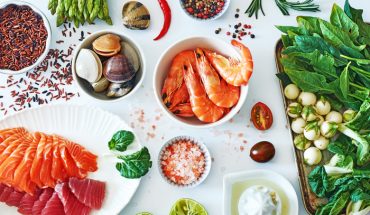Cheese’s next wave: researchers explore potential of marine rennet substitute: Ben Knight of the UNSW Sydney explains more here:
For many, cheese isn’t merely a food or a tasty snack but one of life’s greatest indulgences. They’ll also be the first to tell you that if you don’t like cheese, chances are, you just haven’t found the right one.
As global cheese consumption is expected to increase, cheesemakers could face an uphill battle to keep up with our cravings. But if food scientists have anything to say about it, they might one day be able to draw upon a surprising resource to help them ride the wave of demand.
Associate Professor Jian Zhao, from the School of Chemical Engineering at UNSW Sydney, says the future of cheese production could be reliant on our oceans. The food microbiologist says the marine ecosystem is a vast untapped resource for obtaining food ingredients.
“Considering that over 70 per cent of the world’s surface is covered by oceans, it’s a tremendous untapped resource for food components, including the types of things we need to sustain cheese production as consumption continues to grow,” A/Prof. Zhao says.
The search for a rennet substitute
Milk coagulation, or curdling, is an essential step in cheese production. For many kinds of cheese, this is done using a milk-clotting enzyme or ‘proteases’ called rennet, a substance derived from young calf’s stomachs that is in relatively short supply.
Even though some rennet substitutes exist and are used in industrial-scale cheese-making, they can often suffer from various shortcomings and produce inferior quality and lower yields.
“One alternative is to use genetically modified organisms to produce rennet, which chemically speaking is fine, though some consumers have religious and ethical concerns with eating these products,” A/Prof. Zhao says. “Others, like microbial substitutes, tend to produce cheese with a bitter flavour or poor texture, so the industry is still searching for better alternatives.”
As global cheese consumption increases, cheesemakers may struggle to meet demand using conventional methods.
The ocean is home to diverse species representing a vast source of milk-clotting enzymes that might make suitable rennet alternatives in cheese-making.
“One of the potential advantages of using enzymes from marine sources is that they’ve adapted to the harsh ocean environment,” A/Prof. Zhao says. “They may have very different properties from protease from land species, and some may be ideal for milk clotting, due to qualities like higher catalytic activity and ability to operate at wider temperature ranges.”
Some research has shown that when applied as a milk-clotting agent, a marine-derived protease from fish can produce a cheese with comparable characteristics, including flavour and textures, to those made with traditional commercial rennet. Previous studies have also indicated proteases from seaweed macroalgae may be chemically suited for the job.
“A seaweed-derived milk coagulant would be preferable for industrial-scale cheese-making due to the relative abundance of seaweed available in the world compared to animals,” A/Prof. Zhao says.
Seaweed-derived milk coagulant
A recent study by Dr Zhao and a team of UNSW researchers managed to take this one step further and identified a seaweed species with sufficient caseinolytic activity – milk-clotting ability – to produce cheese. The cheese yield was also comparable to that obtained using traditional rennet.
“We tested seven different seaweed-derived proteases on their milk-clotting potential and found one was able to help make real fresh cheese in a lab environment,” A/Prof. Zhao says. “But this is only a small fraction of the hundreds of different seaweed species in our oceans, so there is a lot more scope to find something out there that could be even more effective.”
But would the cheese be edible? More studies need to be conducted to be certain, but Dr Zhao says it’s likely safe to eat given seaweed coagulant is already widely used as a food gelling agent, and the seaweed is eaten in many diets.
“Safety-wise, we don’t think there are too many concerns, especially as we’re just using the protease as a coagulant,” A/Prof. Zhao says. “We did need to make an adjustment to the typical temperature used in the purification stage, as the seaweed coagulant is optimum at a higher temperature than the normal rennet, otherwise, the process remained the same.”
If you’re hoping to taste a slice of seaweed-derived cheese, it’s unlikely to happen anytime soon. Between food regulators and appetite from the industry, it will be some time – likely decades – before we see cheese made from seaweed coagulant hit supermarket shelves.
In the meantime, the researchers are hoping to conduct more research into the sensory and textural properties of cheese made using seaweed coagulants and do more biochemical analysis to confirm their suitability as rennet substitutes.
“We’re not getting carried away with the findings, and we consider the work to still be at the pioneering stage,” A/Prof. Zhao says. “But this represents an incremental step forward in the search for an ideal rennet substitute for cheese-making.”
- New lipid-based pathway discovered as key to memory formation - 25th June 2025
- Crucial link could explain how Alzheimer’s takes hold - 25th June 2025
- Understanding Your Mind Can Improve Daily Life - 25th June 2025






